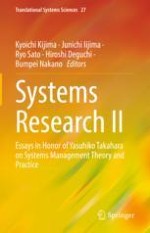2022 | OriginalPaper | Chapter
11. A Model of Consensus and Consensus Building Within the Framework of Committees with Permissible Ranges of Decision Makers
Activate our intelligent search to find suitable subject content or patents.
Select sections of text to find matching patents with Artificial Intelligence. powered by
Select sections of text to find additional relevant content using AI-assisted search. powered by
